WORLD CLASS COACHING
40 Small-Sided Games
By Luca Bertolini
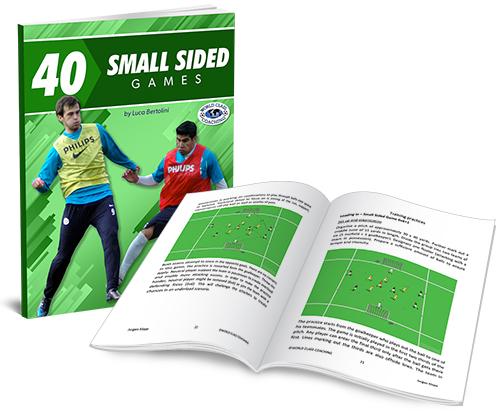
Table of Contents
PART ONE
Introduction
How, When, Where To Use SSGs in Your Training Sessions
PART TWO
2v2, 3v3 and 4v4 Small-Sided Games
PART THREE
5v5, 6v6 and 7v7 Small-Sided Games
PART FOUR
8v8 and 9v9 Small-Sided Games
Introduction: Small-Sided Game definition
A small-sided game is a technical exercise which is carried out in the form of a game. The coach shapes and decides the rules of the game, thinking about the goals of the exercise and the training session. It's organized on the basis of the number of the available players and spaces. We may say that small-sided games come from all those games where the number of players, the rules, and the playing spaces must be considered to construct a match between two teams, wherever it's played.
This kind of exercise is useful to improve the players' technical skills the physical conditioning, as the level of effort for the players is very close to, or more than, an 11 v 11 game. Since small sided games vary in size and predictability of the learning environment, this kind of practice can improve the creative decision making process. Last but not the least, small-sided games help motivate those players who usually isolate themselves by forcing them to take part and develop their game vision.
Generally 4 v 4 and 7 v 7 practices require the same efforts of 11 v 11 games; 2 v 2 and 5 v 5 exercises are even harder. But, as we found out, there are some important key factors that are responsible for the high intensity of the performance of a player, who is involved in a small-sided game:
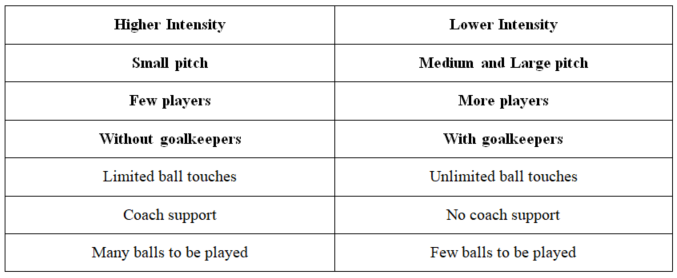
Surely, the sizes of the pitches and the number of players are the main key factors to perform a high intensity small-sided game. This following table is the most common connection between these key factors:

Small-sided games can be considered as a reduced version of soccer game, if we think about them as a sequence of duels, with fewer players. The rules of the games have an important effect on the goals and on coaching results of the practices. For example, rules like the number of touches, the man on marking, the outside free players' support, scoring rules, interval training or non-stop mode can influence the internal player level of effort.
Small-sided games have a limit. The players just work on possession or non-possession phases of play, without specific tactical requirements. Perhaps the transition phases are not coached fully, as they are only a succession of the moves, with the ball and without the ball.
Then the tasks of the players need to be specified inside the game and the patterns of play need to be created during the game to shape exchanges of positions and rotations of players which they could repeat on the field during the matches. This way, the timing of play, the numerical advantage, and the outnumbered situations concepts are introduced.
There are two fundamental parameters in a soccer game: space and time. The space that the players are given in each situation of the game and the time they have to fix the issue of the game situation, both from individual and team tactics point of view. The space and the time, while being in possession, and recovering the ball while defending, need to be understood and exploited before the opponents.
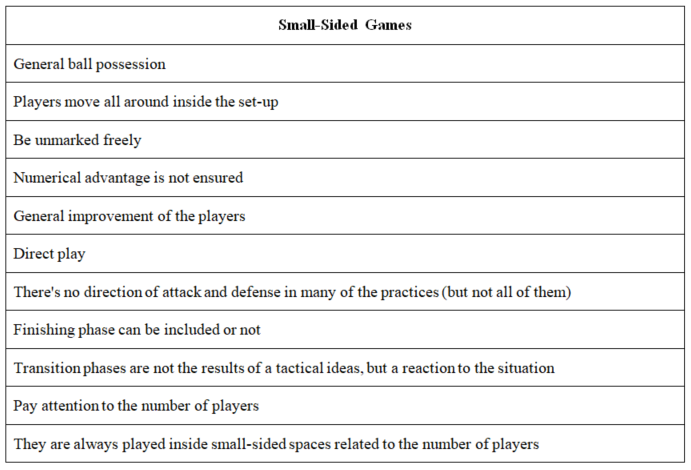
What do we coach with a small-sided game in a training session?
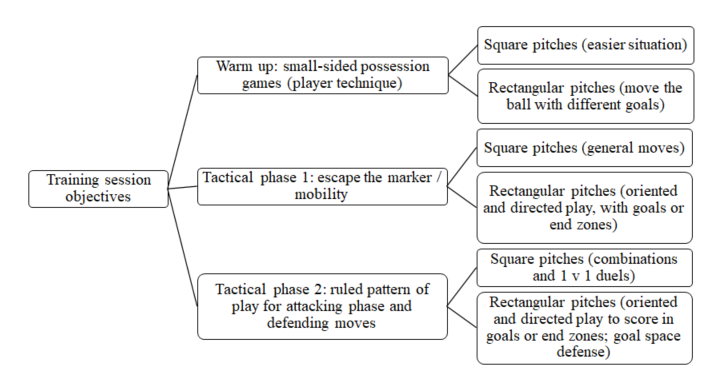
How to include them in a training session?
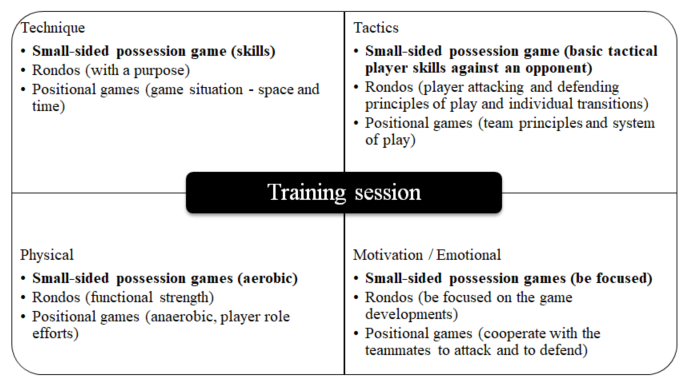
Which are the benefits of the small-sided games?
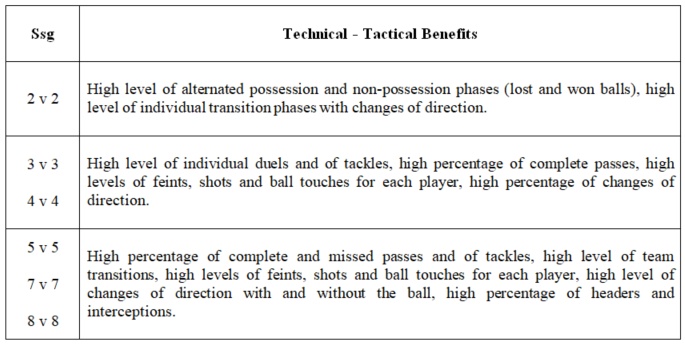
How to perform them?
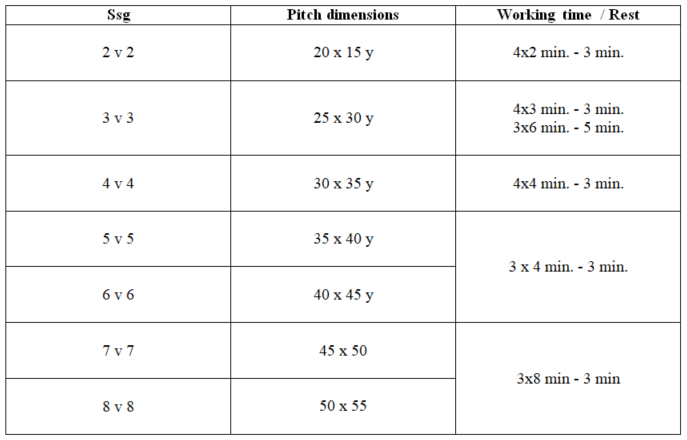
When to run them?
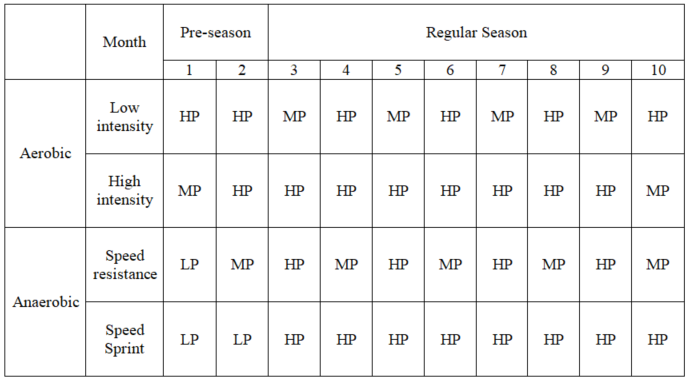
And this is a possible weekly plan to run the right small-sided game on the right day. The week is based on Sunday as match day, Monday as rest day and one daily training session from Tuesday to Friday.

Which kind of small-sided game has to be performed?
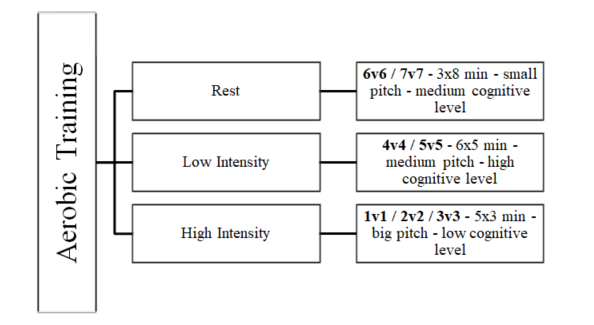
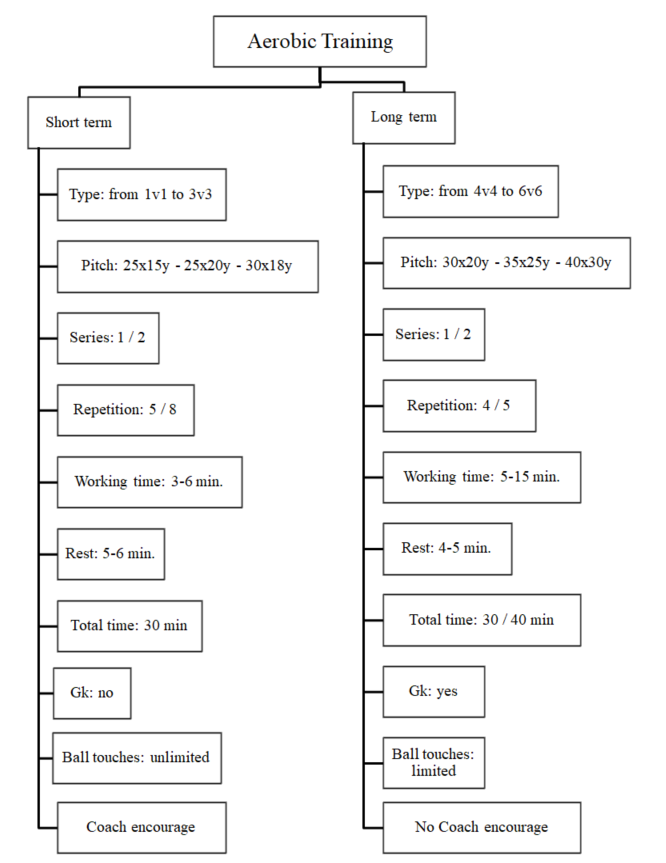
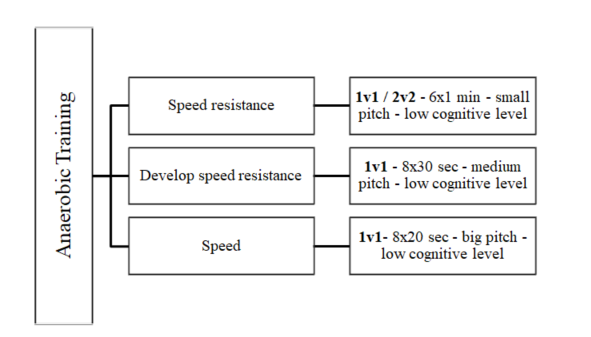
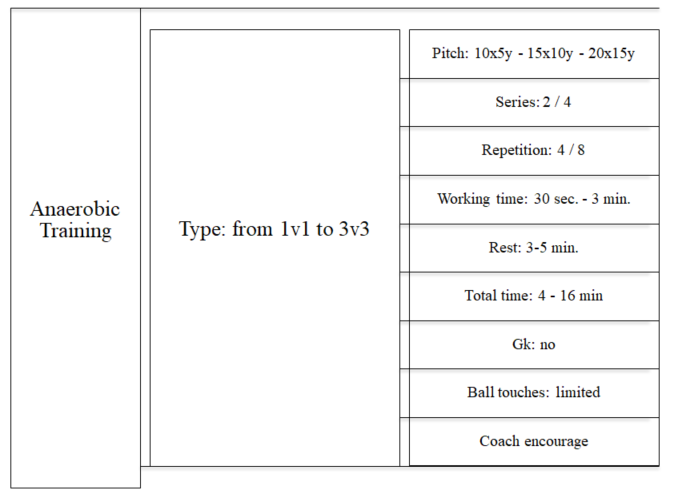
How to increase or decrease the intensity of the practices?
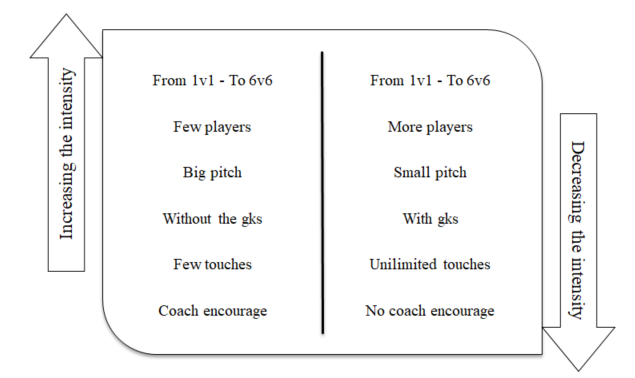
What kind of small-sided game is useful depending on the objectives?
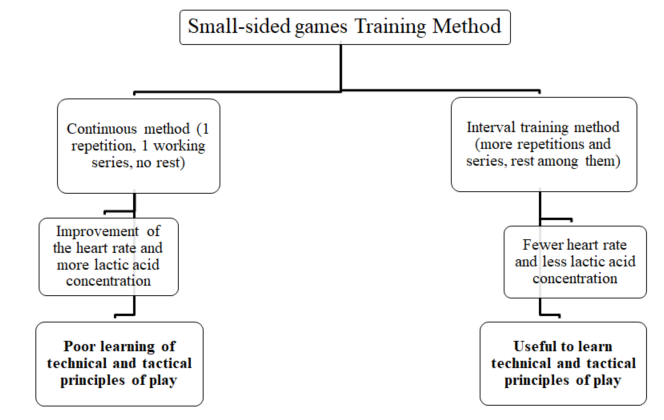
The neutral/free player role
How?
They haven't a specific role or position, as they can be a lower or upper vertex for the team in possession, they can be placed out or in the middle of the playing area. They have the task to be support players for the possession team or even for the defending team, losing the marker or marking wherever it's required by the game situation. They can be still or moving players, they can be pressed or not, they can be always active, taking part to the whole sequence of a practice or just to be a part of it, they can be involved in the transition phases or not, depending on the coach's requirements.
When?
They can receive whenever is needed if the only goal of a possession practice is to keep the ball and if the only goal of the defending team is to recover it as soon as possible to make it safe. Otherwise, they should receive a pass, or to become active during a specific phase of play (transition to attack, transition to defend, after a required number of passes, etc.) create numerical advantages for the team in possession or for the defending team.
Where?
They can play inside or outside the set-up to support the possession team or the defending team from different positions. These position are not usually linked to the roles and to the positions on the field during the matches; they are just useful to coach cooperation and combinations among the players. If the direction of the game sequences is not.
Why?
They support the players in possession to help the team keeping the ball or winning it back, as possession pattern of play is usually the main objective of these kinds of practices. Small-sided games are not linked with a system of play; then the neutral players must be inside or wide supports, back or upper vertex, following the ball's direction and not only the attacking / defending direction of play.
Practices
These 40 exercises concern a progression from the basic 2 v 2 (or games with 4 players) until more complex 8 v 8 small-sided games.
Each progression is made of 5 practices with different requirements and goals; they are divided as follow:
1) Without direction of play (possession)
2) With direction of play (attacking/defending with goals or end zones)
3) Without numerical advantage
4) With numerical advantage (for attacking or defending team)
5) Transition phases coaching
The book is then completed with 5 final exercises with goalkeepers (9 v 9) that follow the same requirements and objectives.


